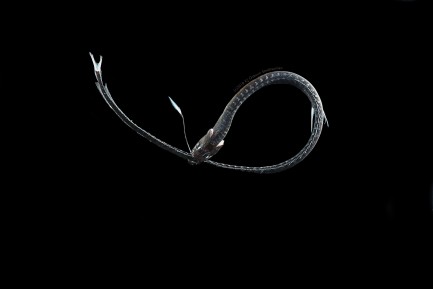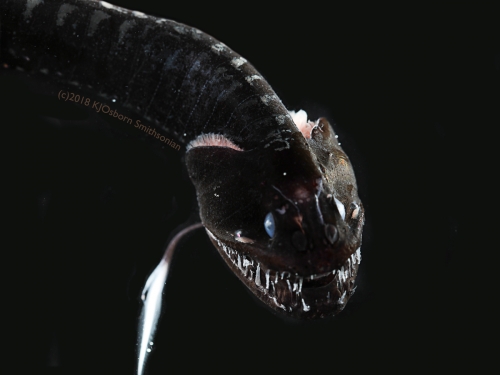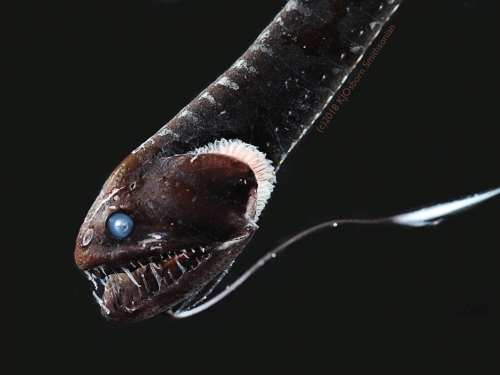The ultra-black Pacific blackdragon (Idiacanthus antrostomus), the second-blackest fish studied by the research team. These fish have a bioluminescent lure that they use to attract prey, and if not for their ultra-black skin and transparent, anti-reflective teeth, the reflection of their lure would scare prey away. The Pacific blackdragon also has light-producing organs below their eyes that scientists expect might be used as a searchlight to spot prey.
In the July 16 issue of the journal Current Biology, a team of scientists led by Smithsonian’s National Museum of Natural History research zoologist Karen Osborn and Duke University biologist Sönke Johnsen report on how a unique arrangement of pigment-packed granules enables some fish to absorb nearly all of the light that hits their skin, so that as little as 0.05% of that light is reflected back.




